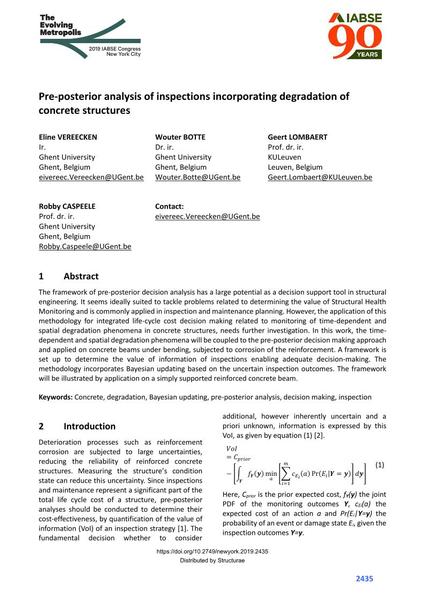Pre-posterior analysis of inspections incorporating degradation of concrete structures

|
|
|||||||||||
Détails bibliographiques
| Auteur(s): |
Eline Vereecken
Wouter Botte Geert Lombaert Robby Caspeele |
||||
|---|---|---|---|---|---|
| Médium: | papier de conférence | ||||
| Langue(s): | anglais | ||||
| Conférence: | IABSE Congress: The Evolving Metropolis, New York, NY, USA, 4-6 September 2019 | ||||
| Publié dans: | The Evolving Metropolis | ||||
|
|||||
| Page(s): | 2435-2442 | ||||
| Nombre total de pages (du PDF): | 8 | ||||
| DOI: | 10.2749/newyork.2019.2435 | ||||
| Abstrait: |
The framework of pre-posterior decision analysis has a large potential as a decision support tool in structural engineering. It seems ideally suited to tackle problems related to determining the value of Structural Health Monitoring and is commonly applied in inspection and maintenance planning. However, the application of this methodology for integrated life-cycle cost decision making related to monitoring of time-dependent and spatial degradation phenomena in concrete structures, needs further investigation. In this work, the time- dependent and spatial degradation phenomena will be coupled to the pre-posterior decision making approach and applied on concrete beams under bending, subjected to corrosion of the reinforcement. A framework is set up to determine the value of information of inspections enabling adequate decision-making. The methodology incorporates Bayesian updating based on the uncertain inspection outcomes. The framework will be illustrated by application on a simply supported reinforced concrete beam. |
||||
| Mots-clé: |
béton
|
||||
